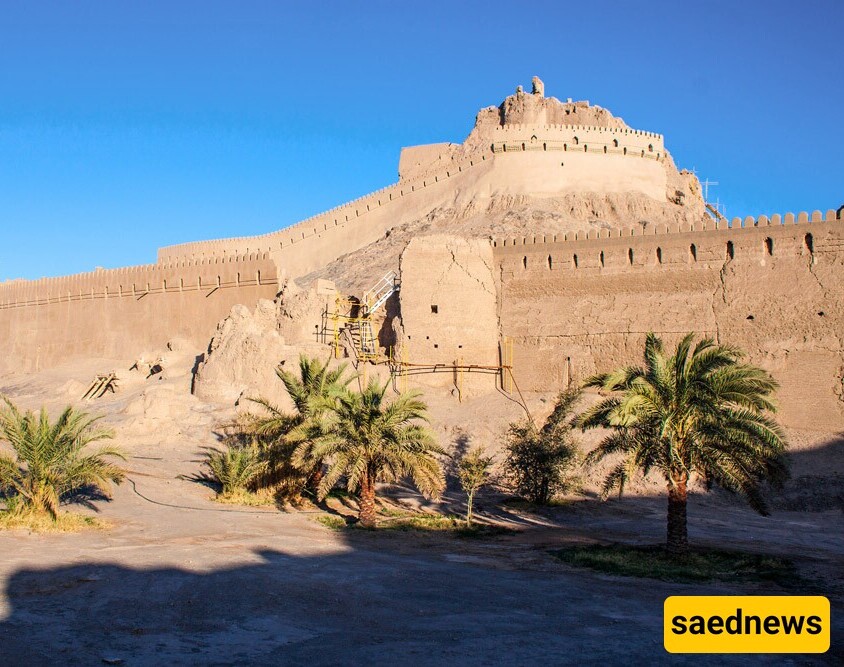SAEDNEWS: Explore the grandeur of Bam Citadel, a UNESCO World Heritage Site, set against the backdrop of Iran’s Lut Desert. This blog delves into its rich history, unique architecture, and the cultural landscape that makes it a must-visit destination.

According to SAEDNEWS, Located on the edge of Iran's arid Lut Desert, Bam Citadel stands as a monument to the region's fascinating history and architectural brilliance. Once the largest adobe structure in the world, this remarkable citadel is not only a feast for the eyes but also a testament to the ingenuity of ancient Persian civilization. Let's embark on a journey through time to uncover the layers of history and architectural wonders that make this UNESCO World Heritage Site a must-visit for travelers.

Dating back over 2,000 years, the origins of Bam Citadel intertwine with various historical epochs. Scholars believe it emerged during the Achaemenid or Parthian eras, with later renovations reflecting Sassanid, Seljuk, and Qajar influences. The architectural design of the citadel showcases its evolution over time, with diverse styles evident in its walls and structures. The mosque's porch hints at Seljuk artistry, while the entrance arc reveals Sassanid craftsmanship, each narrative adding depth to the citadel's story.
Bam Citadel once acted as a hub of refuge and strategic military importance. It served as a sanctuary for historical figures such as Lutfali Khan Zand, king of the Zand Era, who sought shelter within its walls. Although it suffered considerable damage during wars, it remained a vibrant residential city until 150 years ago when its inhabitants relocated to the palm-fringed neighborhoods of modern Bam.

A marvel of ancient urban planning, Bam Citadel is designed following the Hippodamus layout—a grid pattern that showcases brilliant foresight and practicality. Built on a hill, it offered not only strategic advantages but also natural cooling in the region’s dry climate. The fortress is primarily constructed from clay, rubble stone, and straw, showcasing traditional Persian building techniques that have withstood the test of time.
The citadel is divided into governmental and residential areas, spanning an impressive 200 by 300 meters. The integration of living and administrative spaces reflects a well-planned urban environment. Key features include the Mirza Naeim Complex, a bustling bazaar, and a grand Jaame Mosque, each area connected through a network of narrow pathways that lead you deeper into its historical nucleus.

As you wander through the fortress, the rich tapestry of life in ancient Bam unfolds before you. Key structures include the impressive Four-Season Edifice, the main entrance gate, a traditional bathhouse, and a traditional gym or Zoorkhaneh. The residential sector is notably vibrant, showcasing public buildings that hint at the social life of the citadel's former inhabitants.
The horse stable, capable of housing up to 200 horses, exemplifies the importance of equine transportation in the region, while the 29 watchtowers that loom over the citadel serve as reminders of its strategic military role. These towers, with their small windows offering panoramic views, stand vigilant against the sands of time.

Today, Bam Citadel is a poignant reminder of Iran's rich cultural heritage. Although the ravages of the 2003 earthquake left scars, efforts to restore and preserve this magnificent site continue. As you explore its ancient walls and take in the breathtaking desert landscape, you can't help but feel a connection to the past—a past filled with stories of resilience, creativity, and community.
Whether you’re an architecture enthusiast, a history buff, or simply a curious traveler, Bam Citadel should be on your travel list. Its majestic presence and the stories hidden within its walls promise an unforgettable experience that transcends time and place. Prepare to be captivated by the allure of this ancient citadel as it ushers you into a world where history and culture beautifully intertwine.

